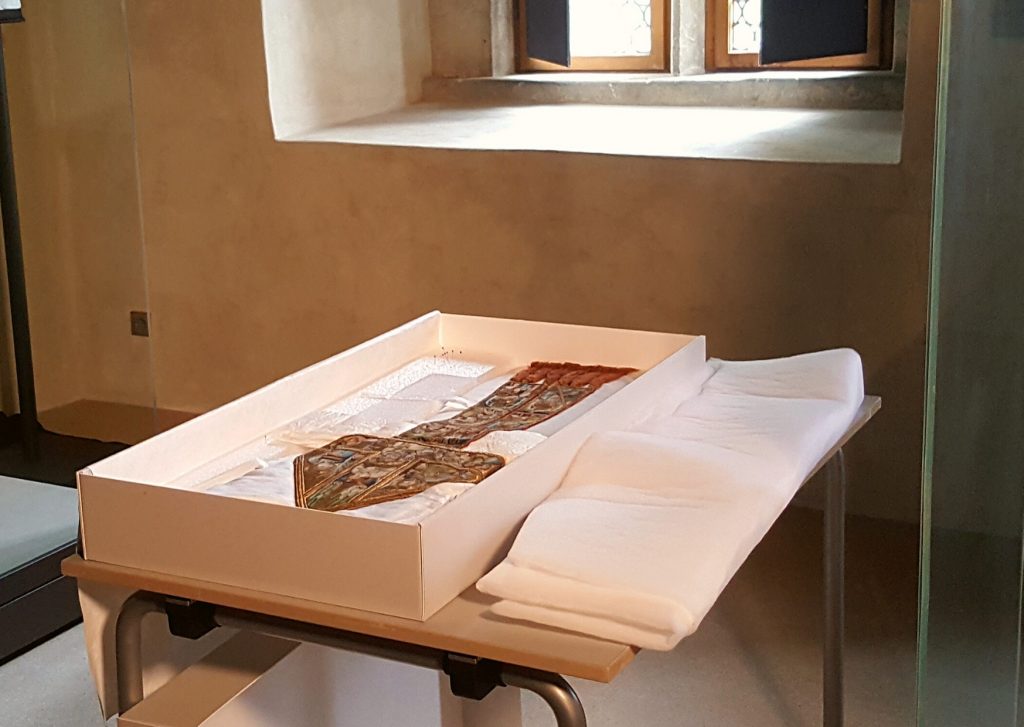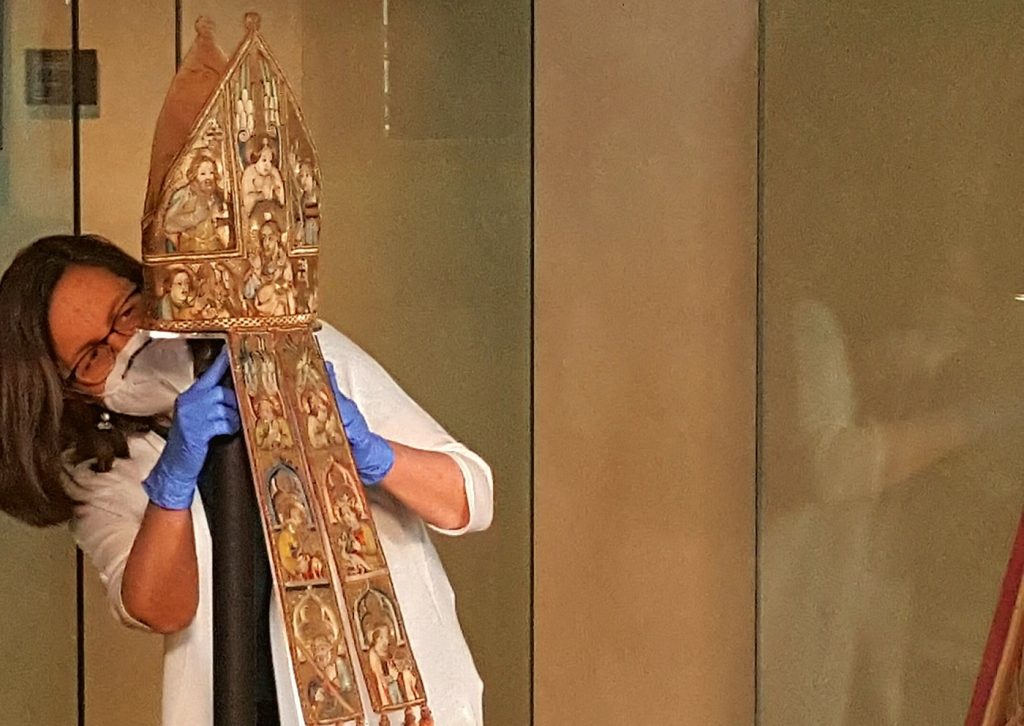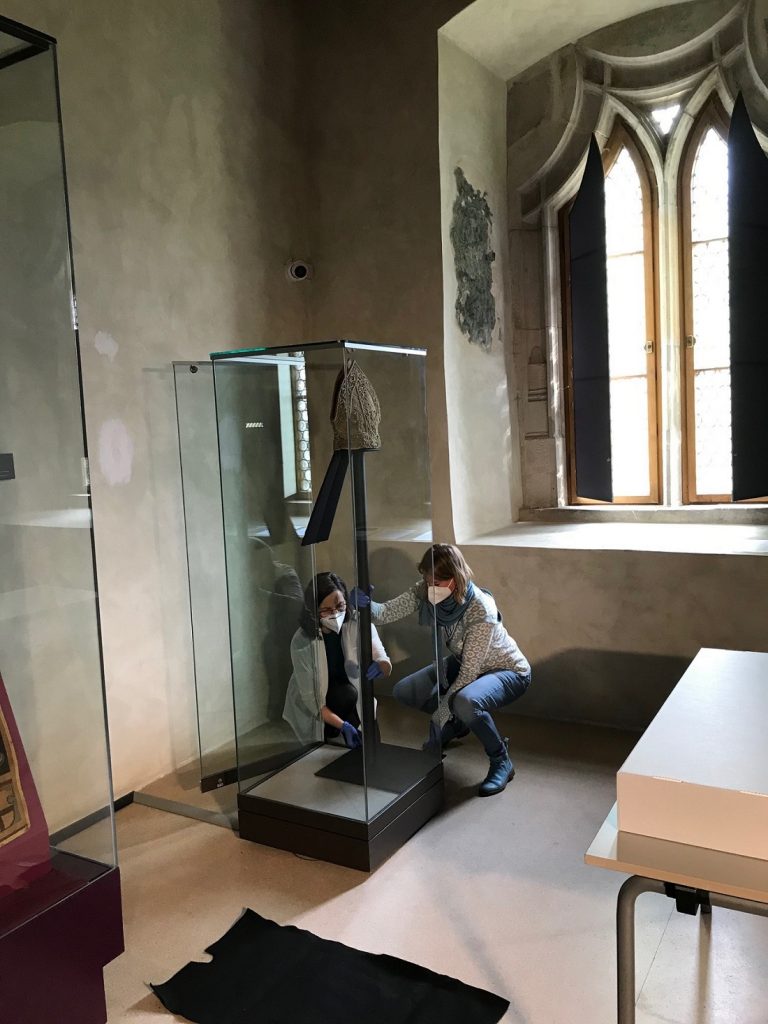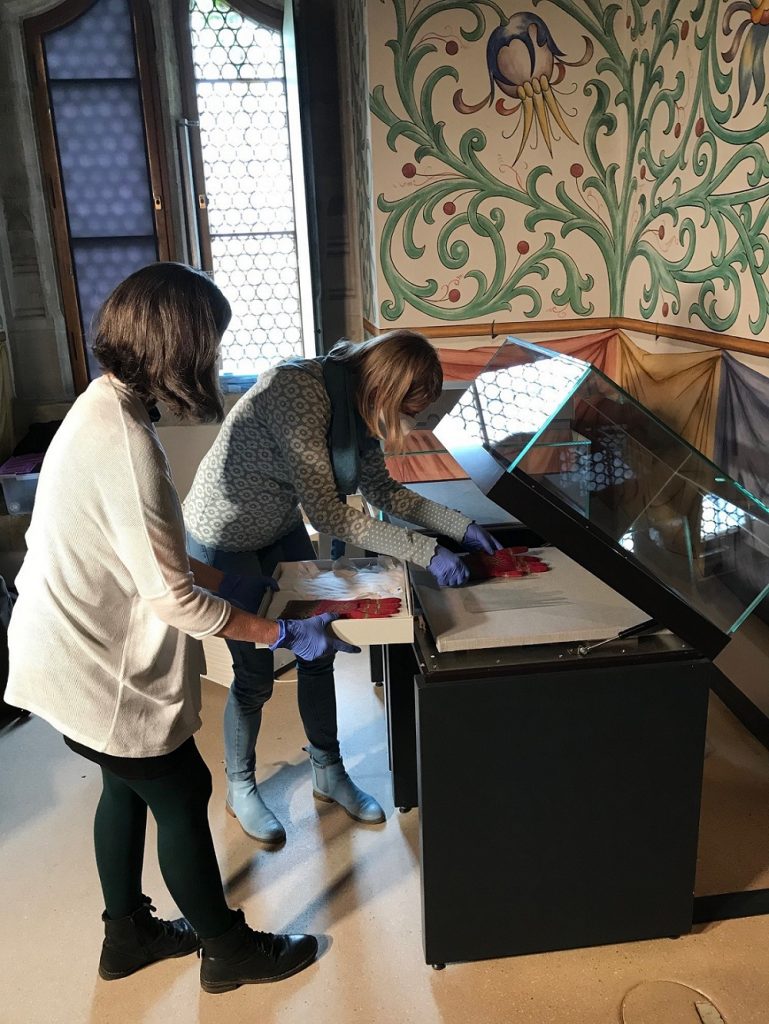One of the exhibition highlights in the anniversary year "Consecrated for eternity. 1000 years of the consecration of Merseburg Cathedral" is provided by the works of art that are returning to Merseburg from the Dresden armoury for the consecration anniversary. The four selected treasures arrived in the chapter house of Merseburg Cathedral today and are now being prepared for the exhibition.

The mitre of Bishop Friedrich II von Hoym is unpacked. 
The restorer carefully prepares the mitre for the exhibition.
Various works of art that originally came from Merseburg have been preserved in the Dresden State Art Collections (armoury). These were part of the episcopal silver collection, which contained not only episcopal vestments but also documents, account books and valuable spices. The silver treasure, which was decimated during the Reformation and after the Thirty Years' War, passed into the possession of the secular administrators and was passed on. After the death of Duke Moritz Wilhelm of Saxe-Merseburg, the pieces were inventoried in 1732 in the so-called "Green Vault" in Merseburg Castle. After the Dukes of Saxe-Merseburg died out in 1738, their possessions passed to the main line of the Albertine dynasty residing in Dresden. As a result, some works of art ended up in the Dresden Green Vault.
The four treasures that will be on display in Merseburg Cathedral until 31 October 2021 are:
Mitre of the Merseburg Bishop Friedrich II von Hoym (Bohemia, around 1360-1370)
The mitre is completely covered with gold thread and figurative depictions in colourful silk embroidery. The figures of the saints stand out clearly against the gold background with their radiant colours. They are executed in the technique known as needle painting. Bohemian pictorial embroidery, to which this work belongs, flourished in Prague in the last third of the 14th century. The mitre is embroidered with St Laurence and St John the Baptist, among others. These two saints are the main patron saints of Merseburg Cathedral.
Magnificent mitre (probably Hans Plock, Halle, 1514-1526)
With its curved side edge, the mitre made of gold thread and pearl embroidery corresponds to the mitre shape from the 16th century onwards. The silk and pearl embroiderer Hans Plock, who worked at the court of Cardinal Albrecht of Brandenburg, was presumed to be the craftsman who made the mitre. This led to the assumption that the mitre could have come from Cardinal Albrecht's possessions. Another assumption attributes the mitre to the Merseburg Bishop Adolf von Anhalt (1514-1526) as the commissioner. Whether he placed the order with Hans Plock in Halle or with another skilful bead embroiderer cannot yet be clearly determined on the basis of the surviving sources.

The magnificent mitre is placed in the display case. 
The pontifical gloves are placed in the display case.
Pontifical gloves (Spain/Italy?, 16th century)
The gloves are knitted from the finest red silk yarn. The golden Christ monogram on the back of the hand identifies them as liturgical clothing. Liturgical gloves have been worn by the pope, cardinals and bishops during the pontifical office since the 10th century. The earliest knitted pontifical gloves that have survived date from the 12th century. Based on the patterns, it can be deduced that they were made in regions that were temporarily under Arab influence, such as Spain or Italy.
Dagger with sheath - so-called dagger of Rudolf of Rheinfelden (15th-17th century)
The dagger with its richly carved boxwood handle is one of the outstanding 15th century pieces in the holdings of the Electoral Saxon Armoury. The accompanying document implies that the dagger came into the possession of the Saxon electors in the 16th century from the estate of the Merseburg bishops. The text also attributes the dagger to the 11th century, to Rudolf von Rheinfelden, Duke of Swabia (around 1025-1080). After the banishment of the Roman-German King Henry IV (1050-1106) in 1077, Rudolf was elected as an opposing king by the opposition of the princes. However, he died in 1080 after being seriously wounded in battle against Henry IV and losing his right hand. He is said to have wielded the dagger in this last battle. However, the boxwood carving is thematically and artistically from the 15th century
The opening of the exhibition was already planned for 8 May. However, due to the ongoing closure of the cathedral to contain the coronavirus pandemic, the opening cannot yet take place. As soon as the incidence figures allow Merseburg Cathedral to be opened to visitors, there will also be the opportunity to visit the "Return of the Merseburg Cathedral Treasure" to visit.
